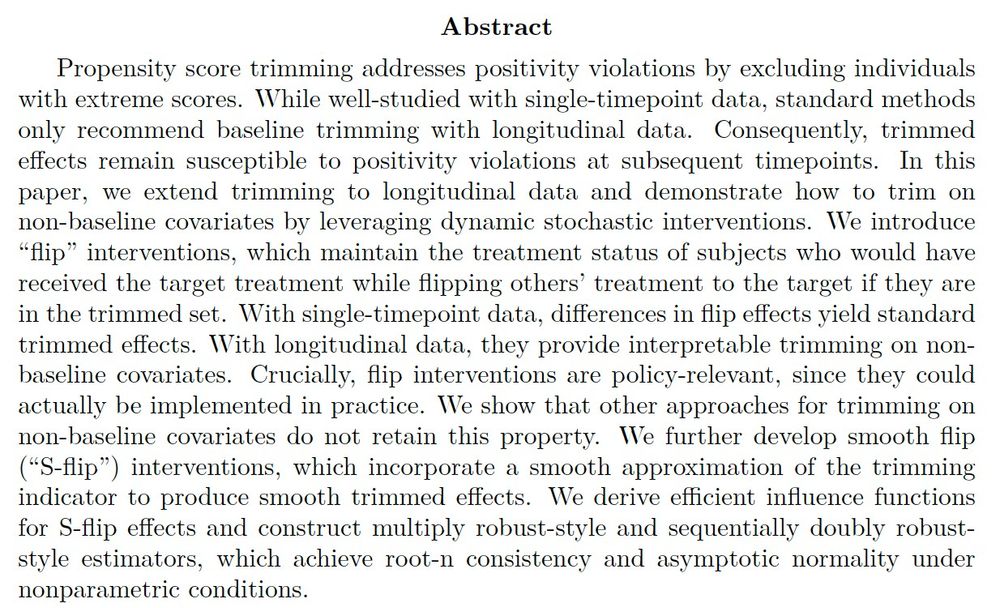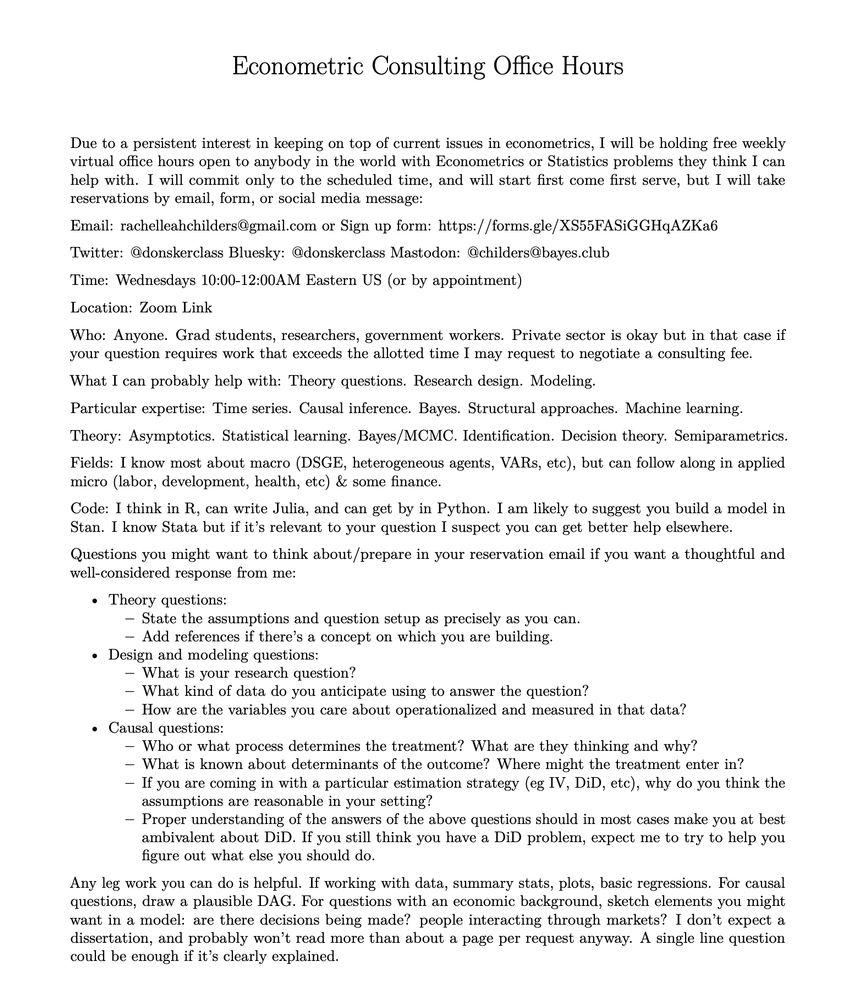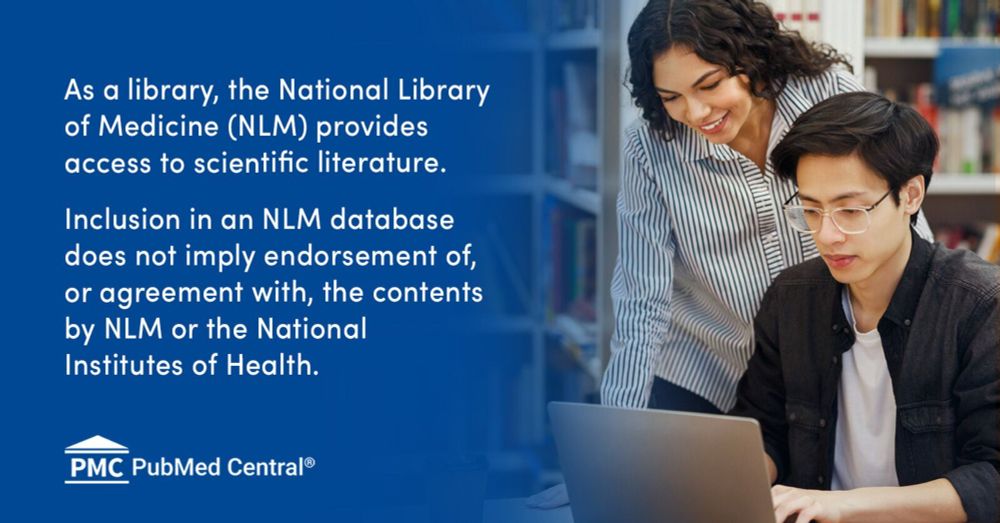
Some notes vv

Some notes vv
Highlights below vv
Longitudinal weighted and trimmed treatment effects with flip interventions (McClean, Levis, Williams et al) Weighting and trimming are popular methods for addressing positivity violations in causal inference. While well-studied with single-timepoint data, standard methods do not easily g
Highlights below vv
We realized trimming is a special version of weighting —> we generalized the analysis to longitudinal weighted effects
“Longitudinal weighted and trimmed treatment effects with flip interventions”
Draft:
alecmcclean.github.io/files/long-w...
"Longitudinal trimming and smooth trimming with flip and S-flip interventions"
Prelim draft: alecmcclean.github.io/files/LSTTEs...

We realized trimming is a special version of weighting —> we generalized the analysis to longitudinal weighted effects
“Longitudinal weighted and trimmed treatment effects with flip interventions”
Draft:
alecmcclean.github.io/files/long-w...
"Longitudinal trimming and smooth trimming with flip and S-flip interventions"
Prelim draft: alecmcclean.github.io/files/LSTTEs...

"Longitudinal trimming and smooth trimming with flip and S-flip interventions"
Prelim draft: alecmcclean.github.io/files/LSTTEs...
Bridging Root-$n$ and Non-standard Asymptotics: Dimension-agnostic Adaptive Inference in M-Estimation (Takatsu, Kuchibhotla) This manuscript studies a general approach to construct confidence sets for the solution of population-level optimization, commonly referred to as M-estimation. Sta
Bridging Root-$n$ and Non-standard Asymptotics: Dimension-agnostic Adaptive Inference in M-Estimation (Takatsu, Kuchibhotla) This manuscript studies a general approach to construct confidence sets for the solution of population-level optimization, commonly referred to as M-estimation. Sta

Details and sign up at donskerclass.github.io/OfficeHours....

Details and sign up at donskerclass.github.io/OfficeHours....
Doubly Robust and Efficient Calibration of Prediction Sets for Censored Time-to-Event Outcomes
https://arxiv.org/abs/2501.04615
Doubly Robust and Efficient Calibration of Prediction Sets for Censored Time-to-Event Outcomes
https://arxiv.org/abs/2501.04615
Data = time-varying {covariates, instruments, outcomes}
Asmp: a version of longitudinal 2SLS; ie linear SEM in 1st & 2nd stages, over time
Time-varying data seems to introduce some nuance. Is there a textbook treatment of this?
Data = time-varying {covariates, instruments, outcomes}
Asmp: a version of longitudinal 2SLS; ie linear SEM in 1st & 2nd stages, over time
Time-varying data seems to introduce some nuance. Is there a textbook treatment of this?
donskerclass.github.io/post/papers-...
donskerclass.github.io/post/papers-...
www.jstor.org/stable/pdf/r...
pmc.ncbi.nlm.nih.gov/articles/PMC...
arxiv.org/pdf/2006.01366
Details below. What are other's favorites?

www.jstor.org/stable/pdf/r...
pmc.ncbi.nlm.nih.gov/articles/PMC...
arxiv.org/pdf/2006.01366
Details below. What are other's favorites?
1. Double cross-fitting (arxiv.org/abs/2403.15175)
2. Calibrated sensitivity models (arxiv.org/abs/2405.08738)
3. Fair comparisons (arxiv.org/abs/2410.13522)
For #3, bsky.app/profile/alec....
Below: gory details for 1 and 2 (new to bsky)
1/9
We tackle the challenge of comparing multiple treatments when some subjects have zero prob. of receiving certain treatments. Eg, provider profiling: comparing hospitals (the “treatments”) for patient outcomes. Positivity violations are everywhere.

1. Double cross-fitting (arxiv.org/abs/2403.15175)
2. Calibrated sensitivity models (arxiv.org/abs/2405.08738)
3. Fair comparisons (arxiv.org/abs/2410.13522)
For #3, bsky.app/profile/alec....
Below: gory details for 1 and 2 (new to bsky)
1/9
We tackle the challenge of comparing multiple treatments when some subjects have zero prob. of receiving certain treatments. Eg, provider profiling: comparing hospitals (the “treatments”) for patient outcomes. Positivity violations are everywhere.

We tackle the challenge of comparing multiple treatments when some subjects have zero prob. of receiving certain treatments. Eg, provider profiling: comparing hospitals (the “treatments”) for patient outcomes. Positivity violations are everywhere.

